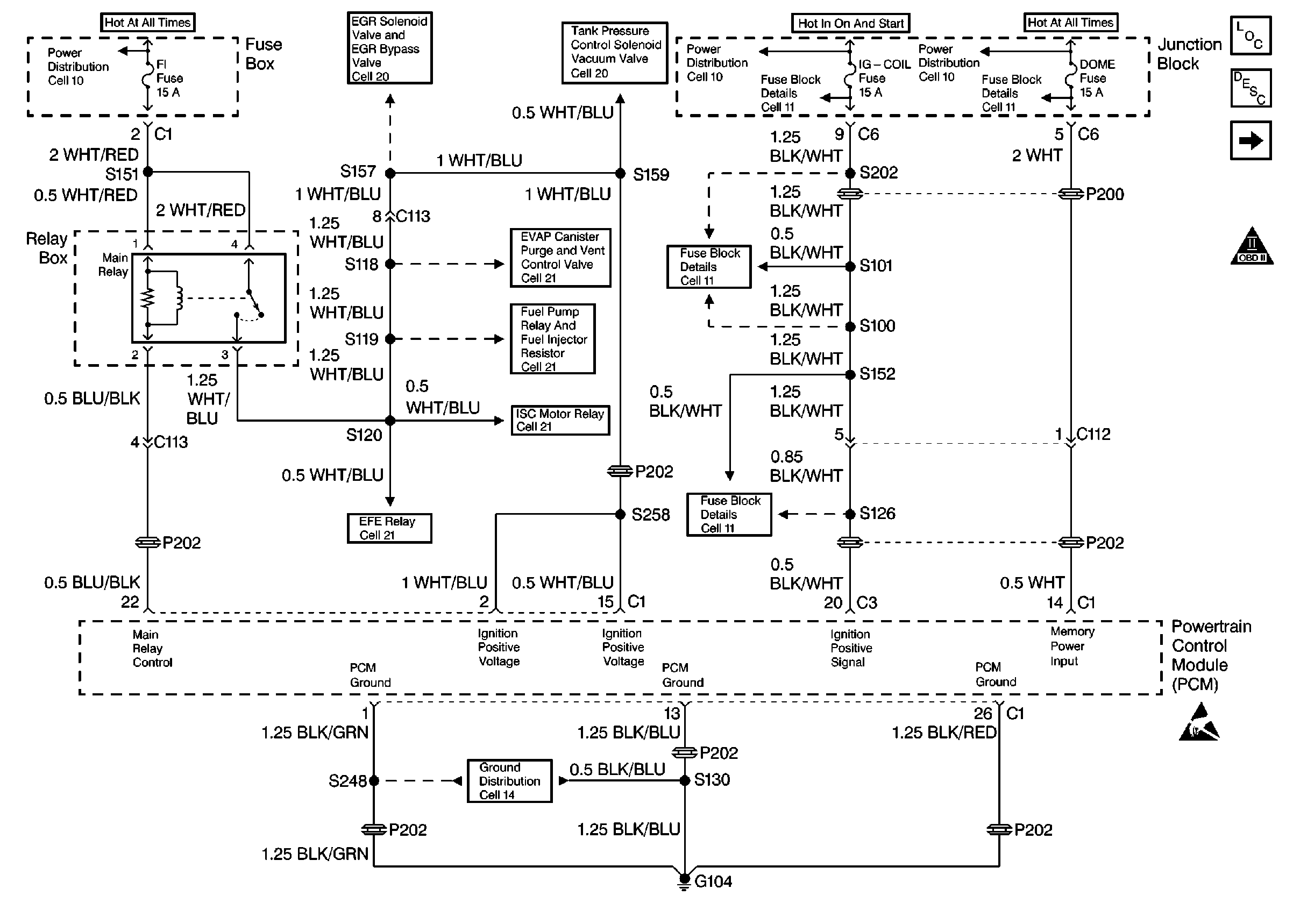Checks
| Action
|
DEFINITION: The engine runs unevenly at idle. The engine or vehicle
may shake if the condition is severe enough. The engine idle speed may vary
in RPM. The condition may be severe enough to stall the engine. The engine
idles at an incorrect speed.
|
Preliminary Check
|
|
Sensor Checks
|
| • | Check the performance of the heated oxygen sensor (HO2S) sensor
1 and the HO2S 2. Refer to Diagnostic Aids in DTC P0131 through DTC P0141. |
| • | Check the throttle position (TP) sensor. A sticking throttle shaft
or a binding throttle linkage will causes a high TP sensor voltage (open throttle
indication). Under these conditions the PCM may not control the idle. Monitor
the TP sensor voltage with the scan tool or a voltmeter. The indicated voltage
should be less than 1.25 volts with the throttle closed. |
| • | Check the engine coolant temperature (ECT) sensor. Use a scan
tool in order to compare the engine coolant temperature reading on a cold
engine with the ambient air temperature reading of the same engine. A coolant
temperature reading that is more than 5°C (41°F) different than the
ambient air temperature reading (on a cold engine) may indicate a high resistance
in the coolant sensor circuit or the sensor itself. Refer to
Temperature Versus Resistance
. |
|
Fuel System Checks
|
| • | Determine whether a rich or a lean fueling condition can cause
the concern. Drive the vehicle at the speed of the concern. Monitor the Fuel
Trim parameters on a scan tool in order to identify the fuel system status. |
| • | Check the fuel injector for leaking. |
|
Ignition System Checks
|
| • | Check for adequate secondary ignition voltage with a
J 26792
spark tester or an equivalent. |
| • | Check the spark plugs for any of the following conditions: |
| - | Wet (fuel fouled) plugs. |
| - | A terminal screw that is bent or loose (rotate and pull). |
| - | A ceramic insulator that has cracks, carbon tracking or deposits
(red or black dust) |
| - | A tip insulator that has cracks, carbon tracking, deposits (oil,
carbon, glazing, fuel additive), or is loose (rattles). |
| - | A center electrode that is loose (wiggles side to side) |
| - | An incorrect spark plug gap that is too large or too small. |
| - | Platinum pads that are missing. |
| • | Check the spark plug cables by connecting an ohmmeter to the ends
of each cable. Replace any spark plug cable that reads over 30,000 ohms. |
|
Engine Mechanical
Check
| Check for any of
the following engine mechanical concerns:
| • | Faulty hydraulic lifter assemblies |
| • | Broken or weak valve springs |
| • | Sticking or leaking valves |
| • | Incorrect or worn camshaft |
Refer to Engine Mechanical.
|
Additional Checks
|
| • | Check for vacuum leaks. Vacuum leaks can cause a higher than normal
idle speed. |
| • | Check the PCM grounds for being clean, tight, and in the proper
location. Refer to
PCM Power and Ground

. |
| • | Check that the battery cables and ground straps are clean and
secure. |
| • | An idle concern that occurs when the A/C is ON may be caused by
A/C refrigerant pressure that is too high or a faulty high pressure switch. |
| • | Check the idle speed control (ISC) system for proper operation.
Use a scan tool in order to command the ISC motor to increase/decrease idle
speed. |
|

